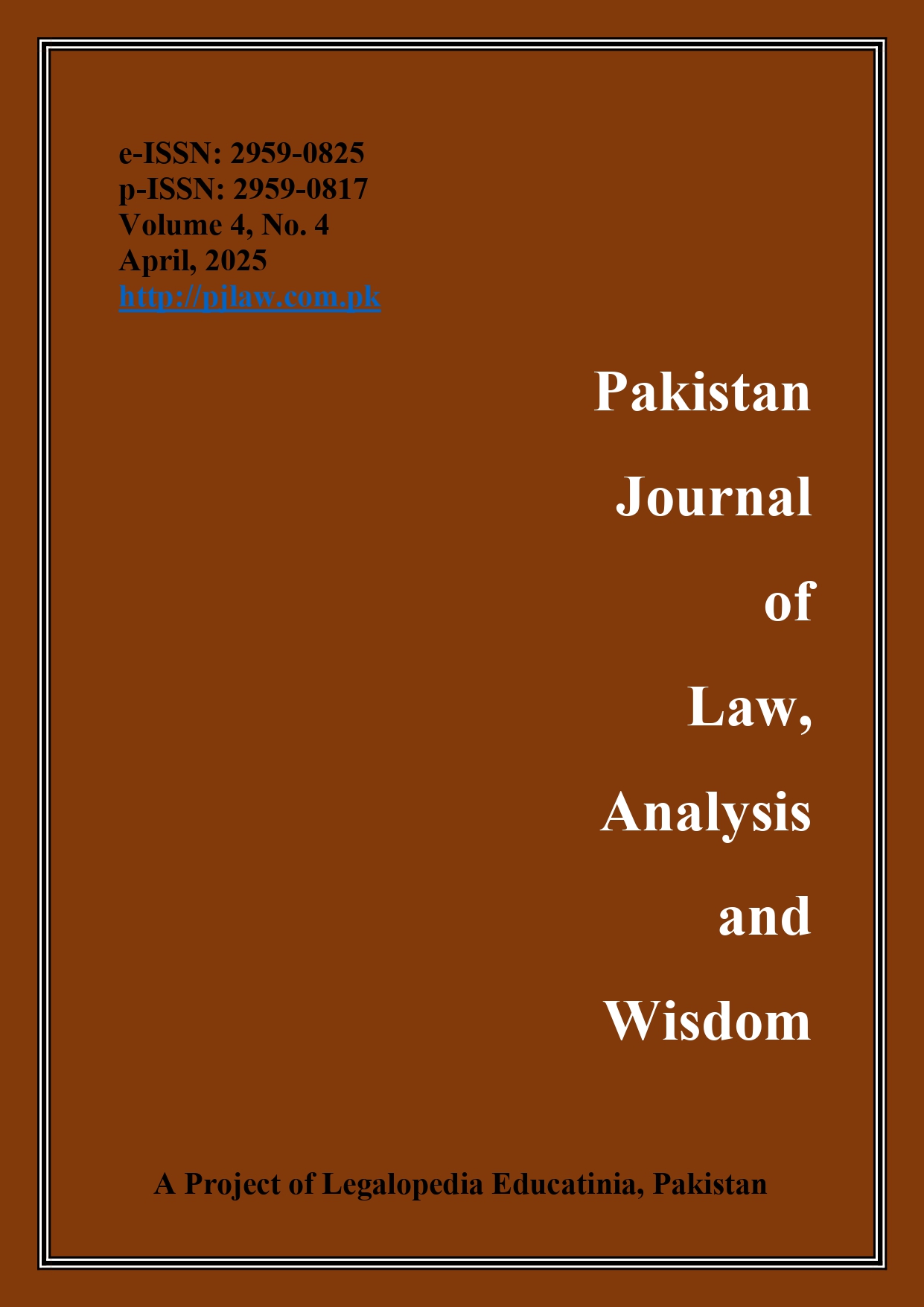The need of International Level DNA Centers and Laboratories in Pakistan: A Critical Legal and Scientific Perspective
Keywords:
Pakistan, Forensic Investigation, Admissibility, DNA, Court, Crime Scene, CriminologyAbstract
Forensic science, particularly DNA analysis, has become a cornerstone of modern criminal justice systems worldwide. However, Pakistan faces significant challenges in leveraging forensic science to strengthen its rule of law and criminal justice system. This article explores the deficiencies in Pakistan's forensic science infrastructure, the admissibility of forensic evidence in courts, and the handling of crime scenes. It also highlights the growing acceptance of DNA evidence in Pakistani courts, particularly in murder and rape cases, as mandated by Section 164-B of the Code of Criminal Procedure (CrPC). The article concludes with recommendations for establishing international-level DNA centers and laboratories, improving forensic training, and maintaining a national DNA database to enhance the criminal justice system in Pakistan. This research article explores the pressing need for international-level DNA centres and laboratories in Pakistan, highlighting forensic science's role in enhancing crime detection, judicial efficacy, and the rule of law. In recent years, forensic science has developed into a highly developed scientific discipline that is used in both criminal and civil investigations. It includes all of the currently used scientific methods, including DNA and fingerprint analysis, ballistics, explosives, and even photo granitic testing and lie deduction mechanism.
References
Code of Criminal Procedure (CrPC), Section 164-B.
Encyclopedia Britannica. (2015) ‘DNA fingerprinting’ <http://www.britannica.com/science/DNA-fingerprinting>. Encyclopedia
Hugh Whithall. (2008). The Forensic Use of DNA. Scientific Success Story or Ethical Minefield’ 3 Biotechnology Journal 303.
International Best Practices in Forensic Science and DNA Analysis.
Jennifer L. Doleac. (2012). The Effects of DNA Databases on Crime’ Working Paper <http://www.batten.virginia.edu/content/2013-001-effects-dna-databases-cr.
Khaleda Parven. (2013). Forensic Use of DNA Information v Human Rights and Privacy Challenges’ 17 University of Western Sydney Law Review 41.
Margarita Guillén, (2000). María Victoria Lareu, Carmela Pestoni, Antonio Salas, and Angel Carracedo. ‘Ethical-legal Problems of DNA Databases in Criminal Investigation’ 26 (4) Journal of Medical Ethics 266 <http://jme.bmj.com/content/26/4/266.full>.
Michael Briody. (2005-2006). The Effects of DNA Evidence on Property Offences in Court’17 (3) Current Issues Criminal Justice 380.
Pakistan Legal Decision (2010) FSC Page 215.
Pakistan Legal Decision (2021) SC Page. 362.
Peter D. Martin, Hermann Schmitter, and Peter M. Schneider. (2001). A Brief History of the Formation of DNA Databases in Forensic Science within Europe. Forensic Science International.119 (2) 225.
Punjab Forensic Science Agency (PFSA) - Official Website.
Qanoon-e-Shahadat Order 1984.
Sindh Forensic DNA and Serology Laboratory - Reports and Publications.
Supreme Court Monthly Review (2016), Page 274.
Supreme Court Monthly Review (2024), Page 1085.
Tania Simoncelli, (2006). Dangerous Excursions: The Case Against Expanding Forensic DNA Databases to Innocent Persons’34 (2) The Journal of Law, Medicine & Ethics 390.
Downloads
Published
Issue
Section
License
Copyright (c) 2025 Dr Mahmood Ahmed

This work is licensed under a Creative Commons Attribution-NonCommercial 4.0 International License.











 LEGALOPEDIA EDUCATINIA (PVT) LTD
LEGALOPEDIA EDUCATINIA (PVT) LTD